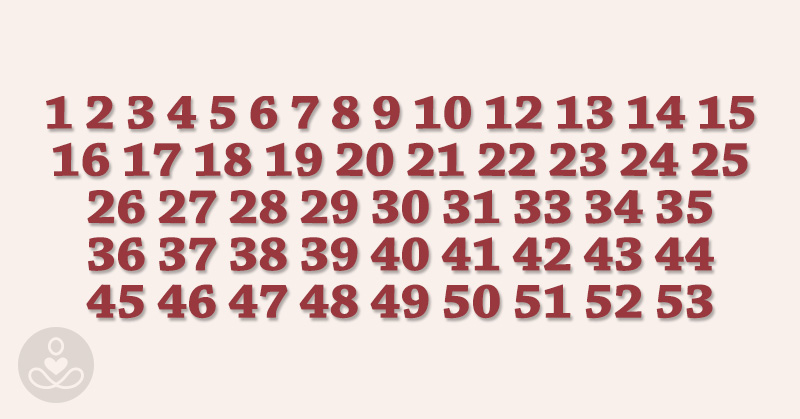Things are not always as perfect as they seem…So says this number puzzle. At first glance, you’d immediately think of it as a 1, 2, three count-up, but it’s not. The human brain is a fantastic work of art. It can adapt itself to sights and thoughts that are common to our everyday lives. A downside of this is that we don’t bother to process these physical and virtual images anymore.

We assume they are business as usual, which is what’s going on with the sequence above. On first sight, you probably wouldn’t notice there are two missing numbers. I for one didn’t. I had to go through it THREE times to find the numbers. For some reason, that upsets me a lot.
The cerebrum controls critical thinking. This part of the brain is much larger and highly developed in humans than in other animals. That’s what controls your ability to solve puzzles, think critically, and find the missing numbers in the sequence below.
I’m sure you’ve noticed there’s no 11 by now
This isn’t so much of a puzzle as it is a brain teaser. A brain teaser is a problem designed to amuse when the answer is found. Unfortunately, I didn’t laugh when I spotted 11. I felt like whacking myself upside the head.
You probably skimmed through the picture the first time. When your brain processed the first four or five numbers in the first row, it skipped to the second row. Once the first few digits are the same, it will just scan through the remaining numbers and tell you it’s a simple 1, 2, and 3, to 53.
On the second trial, it’s expected that you’ll try to go slower. If you don’t look at the numbers one at a time, you’ll probably still think nothing is missing from the sequence. It’s expected that you’ll scan more slowly than during your first check, but still not slow enough.
When you get beaten twice, you’ll find yourself patiently counting like a first grader. That’s when you’ll notice 10, 12 …

Have you discovered the second missing number?
If you keep up with the patient counting, you’ll get to the third row and notice 31, 33 …
The number 32 is also missing.

This sequence has a particular feature that makes it a hard nut to crack — the way the numbers are arranged in widely horizontal groups. The first row has 15 digits, the second has 10, and the last three each have nine digits. If they were arranged in rows with five numbers each, it would have been much easier to spot the missing numbers quickly.
Also, the numbers are clustered too closely. A teaser like this would have been twice as hard if the fonts were smaller. The brain works faster when data is widely demarcated than when they’re clumped up too tightly.
So, if you’ve found that the numbers 11 and 32 are missing, give yourself a loud high-five. Louder if you found out at first look. That shows your brain is extremely healthy.

Sources
- The Editors of the Encyclopedia Britannica. No date available. Cerebrum. Retrieved from https://www.britannica.com/science/cerebrum

